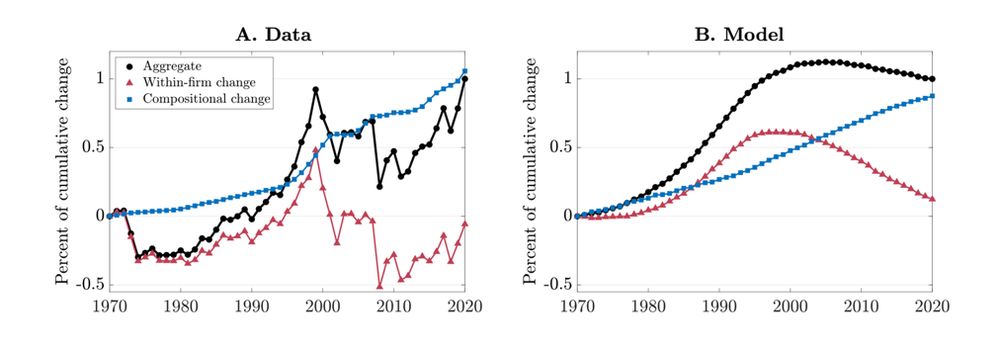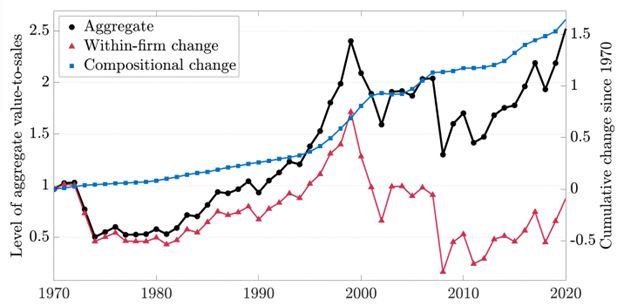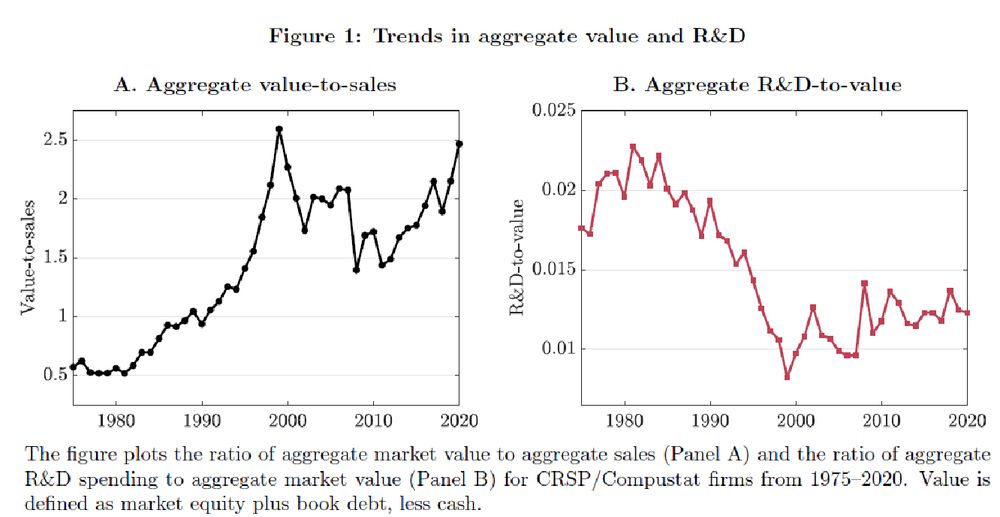Check out the paper (jamesparon.com) for these results + details about the empirical evidence, growth model, and estimation!
And other great papers!
Check out the paper (jamesparon.com) for these results + details about the empirical evidence, growth model, and estimation!
And other great papers!
As in the data, all of the market boom comes from a reallocation to high-valuation firms.
Why? High-valuation firms shift from R&D to M&A, concentrating production in their hands

As in the data, all of the market boom comes from a reallocation to high-valuation firms.
Why? High-valuation firms shift from R&D to M&A, concentrating production in their hands
In other words, it is half as easy to come up with a new idea today as it was 50 years ago.

In other words, it is half as easy to come up with a new idea today as it was 50 years ago.
After estimating the model, he uses it to:
– Estimate the decline in innovation productivity
– Quantify its effect on economic growth and valuations
After estimating the model, he uses it to:
– Estimate the decline in innovation productivity
– Quantify its effect on economic growth and valuations
– Aggregate R&D fell relative to value
– Aggregate M&A doubled relative to R&D
– A compositional change explains the rise in aggregate valuation ratios: markets are more and more dominated by firms high valuation ratios

– Aggregate R&D fell relative to value
– Aggregate M&A doubled relative to R&D
– A compositional change explains the rise in aggregate valuation ratios: markets are more and more dominated by firms high valuation ratios
🧩How do we reconcile stagnating growth (and R&D) with a booming stock market?
James solves this puzzle using micro data and a Schumpeterian growth model.

🧩How do we reconcile stagnating growth (and R&D) with a booming stock market?
James solves this puzzle using micro data and a Schumpeterian growth model.

